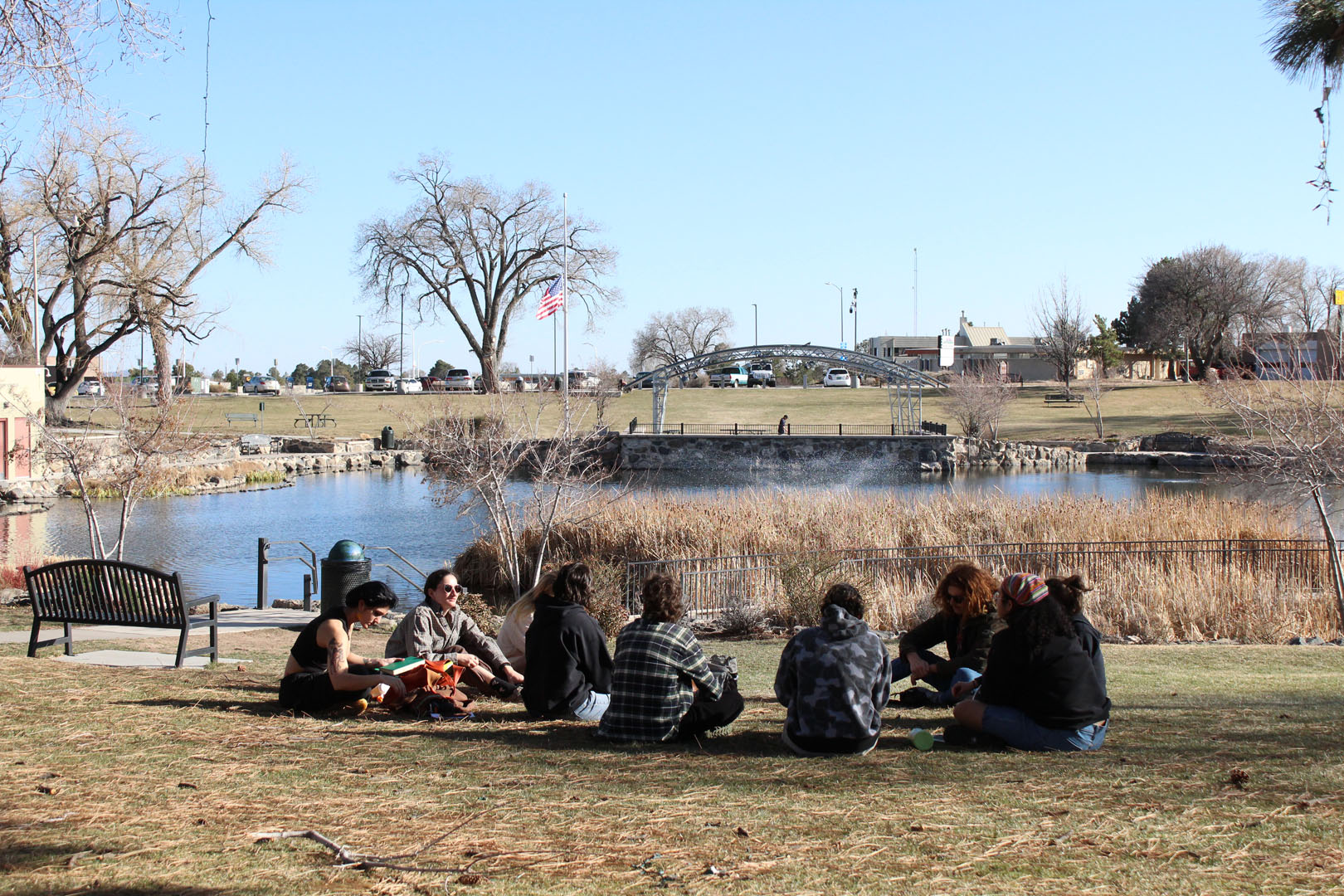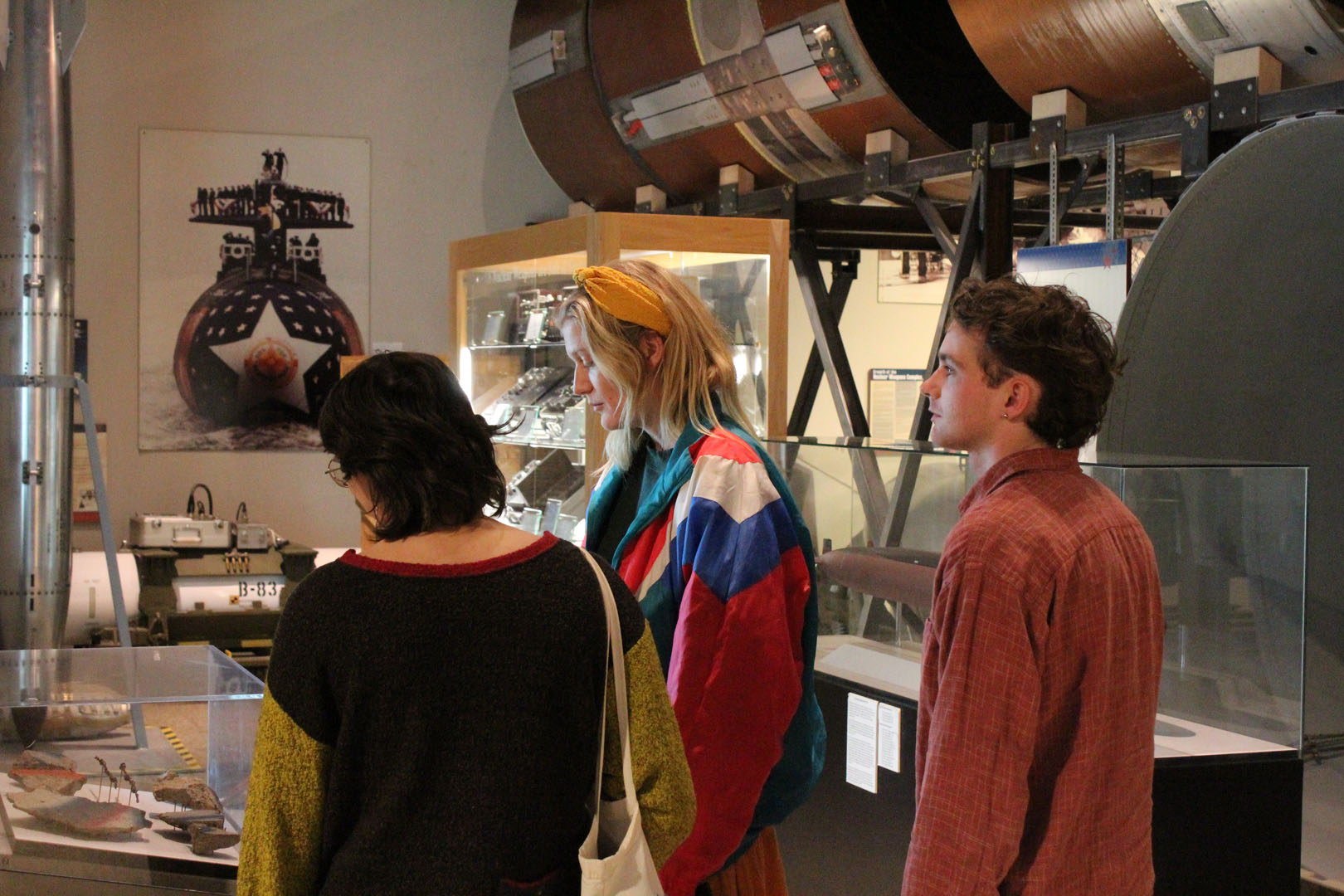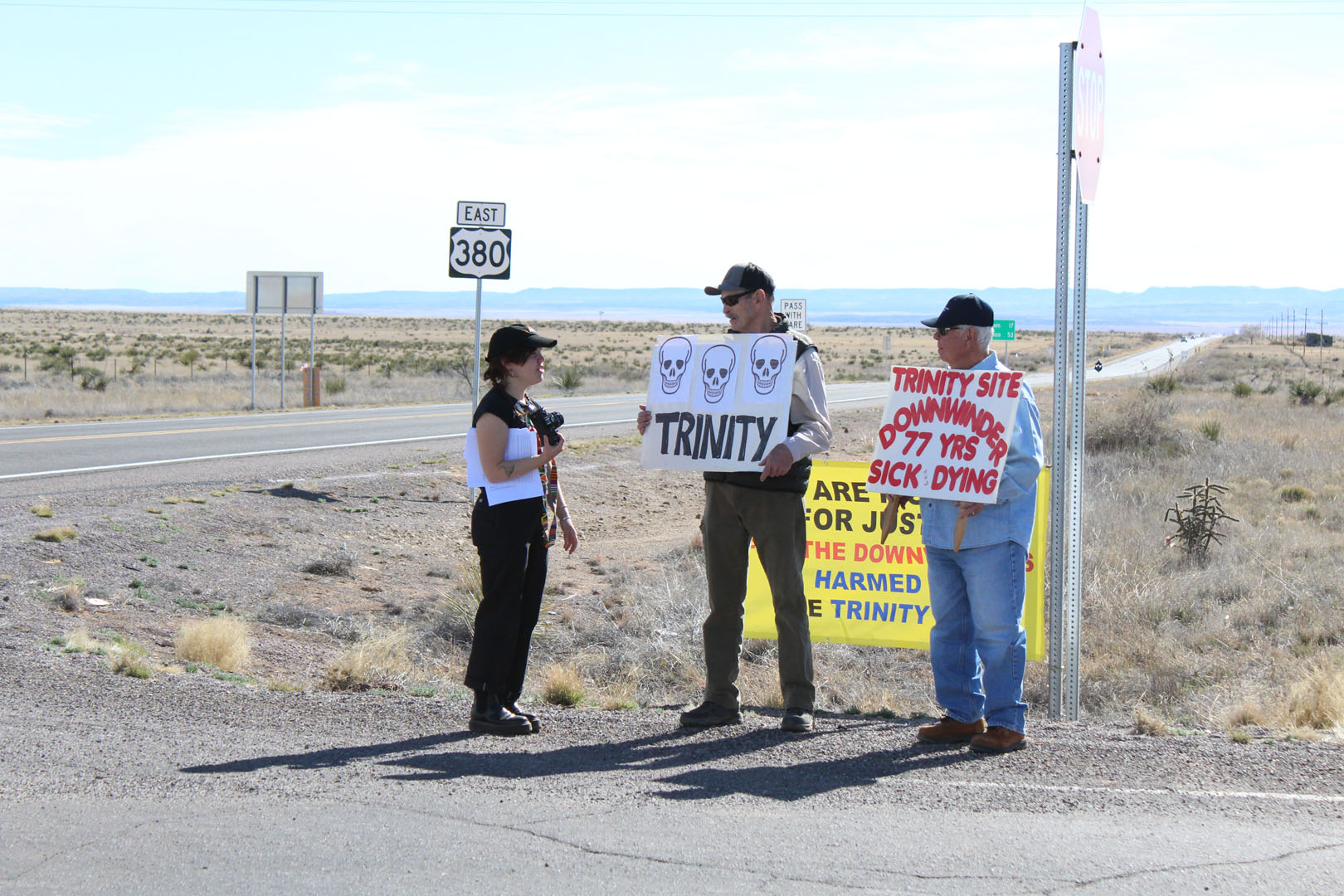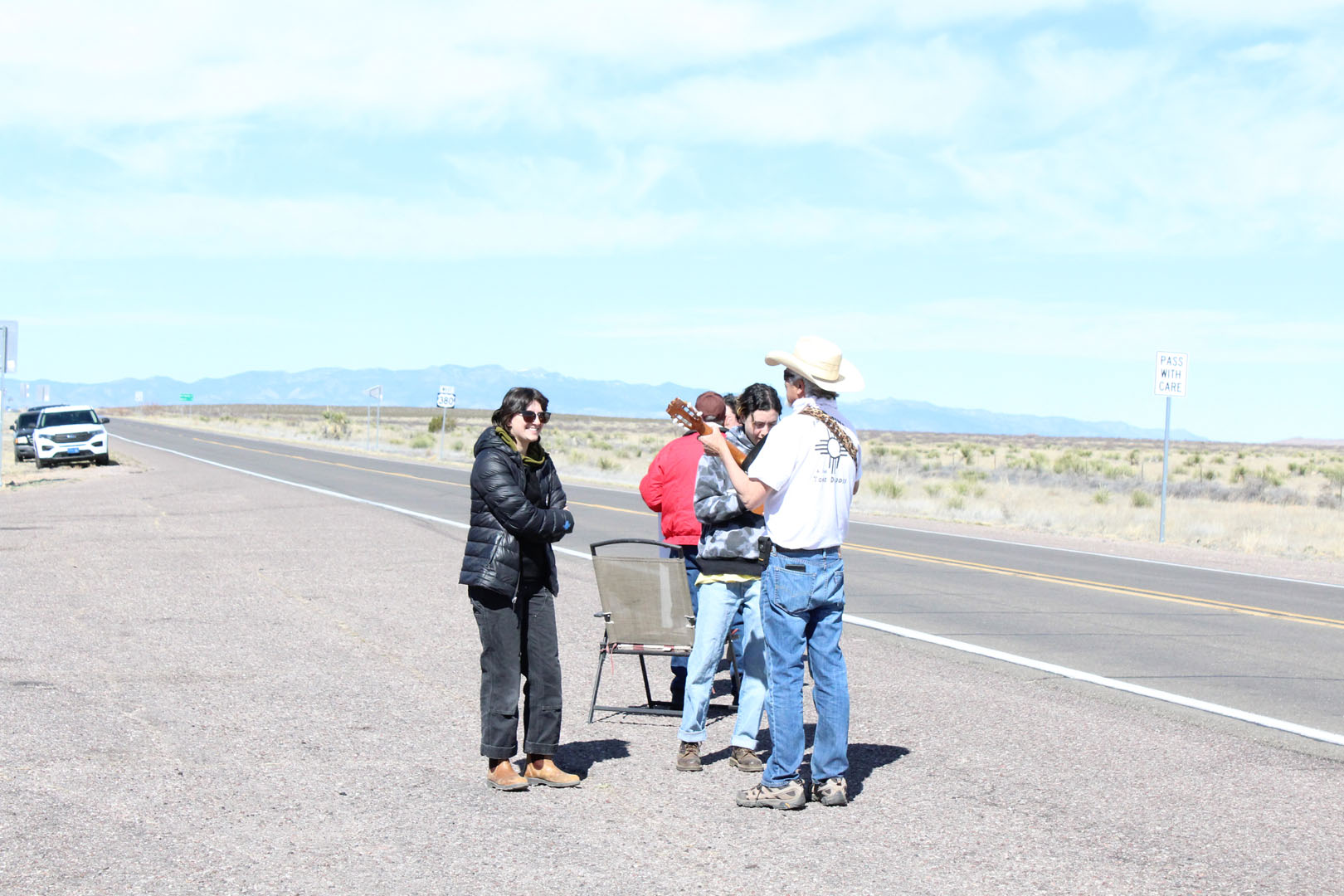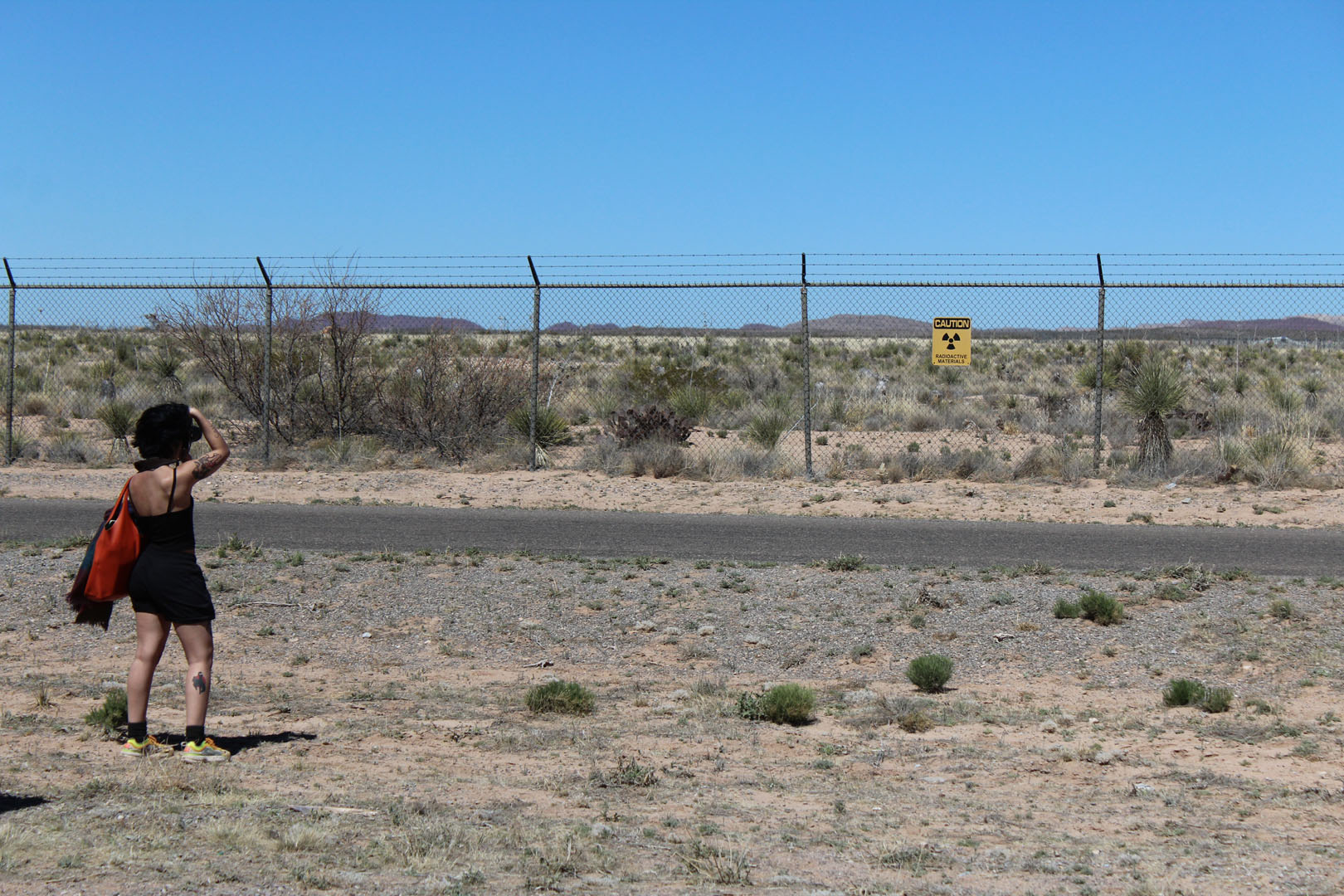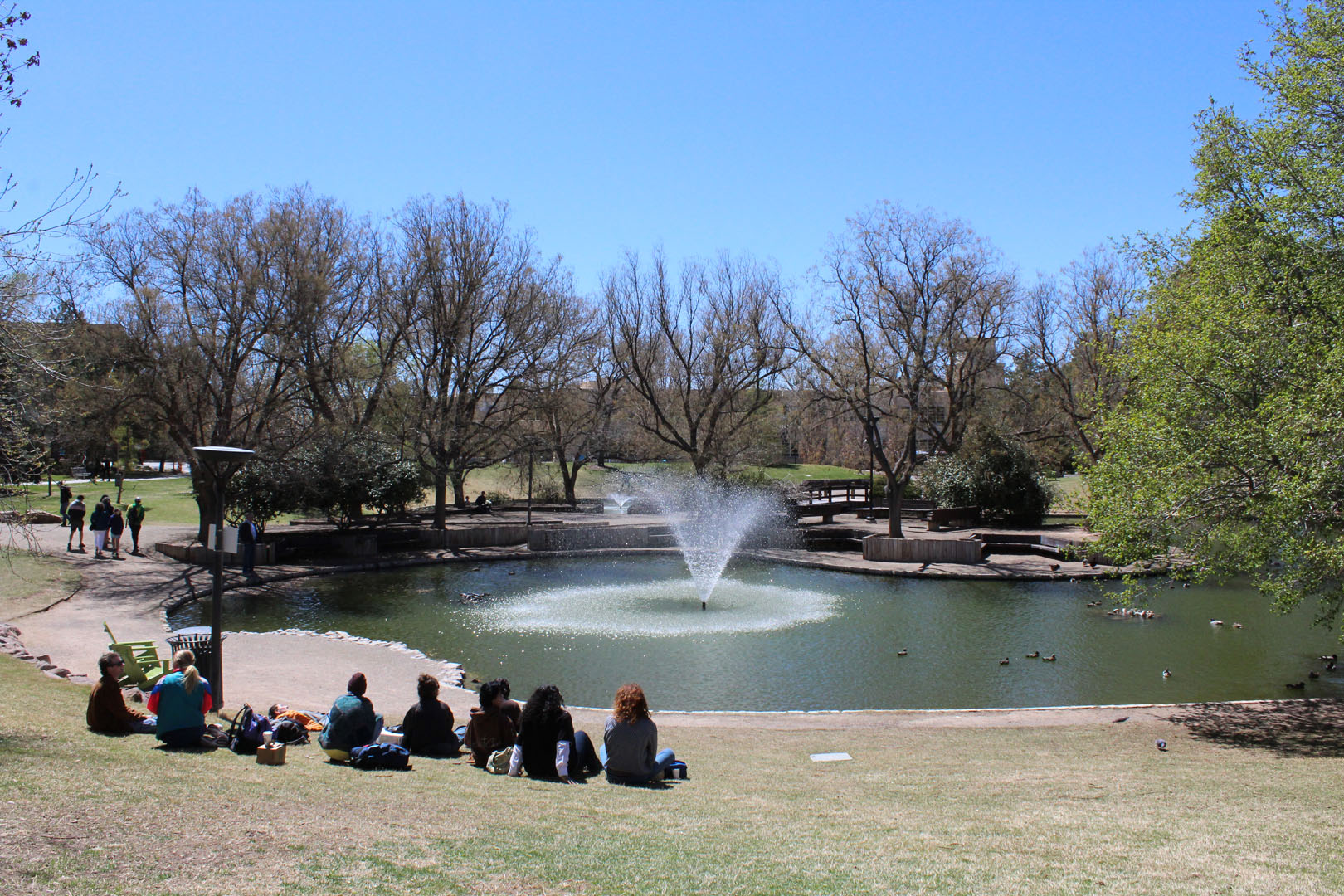Two weeks ago, our group of 10 embarked on a trip to New Mexico. The focus of the journey was to learn about various communities who were displaced and disadvantaged because of the long history of U.S. nuclear research in New Mexico. The trip, funded by the Southwest Studies Department, was orchestrated by paraprofessional Lucie Raphael ’22 and administrative assistant Buzz Katsev ’20.
Some sites, like The Bradbury Science Museum in Los Alamos, provided a federal overview of atomic history. Connected to Albuquerque’s National Nuclear History Museum was a sandy lot which featured retired B-29s, B-52s, various fighter planes, British rockets, and even the conning tower of a submarine.
But we didn’t find the most valuable insights of our trip in state-sponsored museums. On the second day, for instance, we visited SITE Santa Fe. The contemporary art museum featured an exhibit called “Artists Against the Bomb Billboard Project.” The next day, at the University of New Mexico, we sat down with professor Myrriah Gómez for a two-hour seminar on the impact of nuclear testing in rural areas.
Then we visited the Trinity Site, the actual location of the first-ever nuclear detonation. Located inside the active military testing area of White Sands Missile Range, the memorialized ground-zero is only open to the public twice a year. On those two annual occasions, a group known as the Downwinders disseminate information about the bomb’s impact on local communities.
After spending time talking with the Downwinders, we entered the testing area. Visitors were restricted to a fenced-in oval, in the middle of which sat a short obelisk made up of black lava rock. It rested at the exact place the bomb went off.
After years of learning about nuclearization in the classroom, I thought of a nuclear weapon as a deterrent. Through conversations on the trip, I came to understand it in new ways. It’s a pollutant. It’s a lasting carcinogen. It’s a symbol of federal power which was tested indiscriminately across states, often without residents even knowing about it.
But standing in the middle of White Sands Missile Range, a desert made empty by an atomic weapon, I couldn’t ignore the reality. Nuclear weapons are real. The scenes left behind are harrowing. That image, that barren nothing which remains over three-quarters of a century after detonation, will stay imprinted on my mind forever.
I would never be able to learn that in a classroom.



